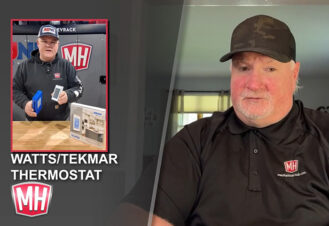Sioux Chief is offering a technical bulletin on No Lead Product Handling Recommendations & Chemical Compatibility for Products Commonly Used in Plumbing Systems. The document particularly focuses on soldering No Lead brass, which requires a different method than traditional alloys prior to The Reduction of Lead In Drinking Water Act.

Rough plumbing manufacturer, Sioux Chief, posted a technical bulletin that focuses on soldering No Lead brass, which requires a different method than traditional alloys prior to The Reduction of Lead In Drinking Water Act.
Many No Lead or lead-free alloys use special chemicals in their composition, making heat diffusion more difficult. As a result, it is more challenging for solder to adhere to No Lead silicon brass than to traditional leaded brass. For No Lead brass, a different procedure is required to make common plumbing solder joints.
In the past, the presence of lead in a fitting allowed a torch’s heat to transfer thermally within a fitting, allowing the solder to flow quicker and more uniformly. Today, contractors and tradesmen deal with many No Lead alloys and specifically silicon alloys that do not act the same way.
If proper procedures are not followed, joints may be compromised resulting in leaks and future issues. Reference Sioux Chief’s Tech Bulletin on soldering No Lead brass (TB 8-15-13) or Sioux Chief’s Tech Bulletin on the material differences between commonly available No Lead alloys.
Sioux Chief’s No Lead alloys, by nature of their alloying elements, achieve higher dezincification resistance and stress corrosion cracking resistance, but must be treated with greater care when soldering.




Join the conversation: